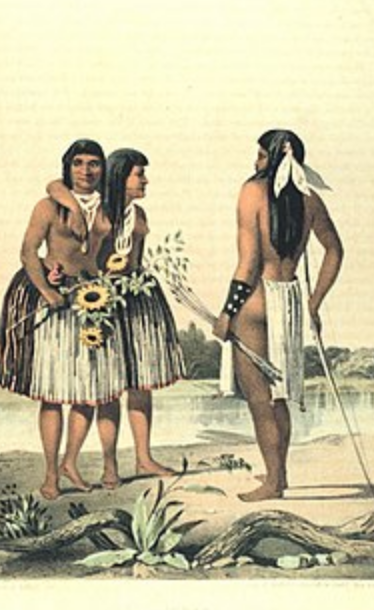The Quechan (or Yuma) (Quechan: Kwtsaan 'those who descended') are an aboriginal American tribe who live on the Fort Yuma Indian Reservation on the lower Colorado River in Arizona and California just north of the Mexican border. Despite their name, they are not related to the Quechua people of the Andes. Members are enrolled into the Quechan Tribe of the Fort Yuma Indian Reservation. The federally recognized Quechan tribe's main office is located in Winterhaven, California. Its operations and the majority of its reservation land are located in California, United States.
The historic Yuman-speaking people in this region were skilled warriors and active traders, maintaining exchange networks with the Pima in southern Arizona, New Mexico, and with peoples of the Pacific coast.
The first significant contact of the Quechan with Europeans was with the Spanish explorer Juan Bautista de Anza and his party in the winter of 1774. Relations were friendly. On Anza's return from his second trip to Alta California in 1776, the chief of the tribe and three of his men journeyed to Mexico City to petition the Viceroy of New Spain for the establishment of a mission. The chief Palma and his three companions were baptized in Mexico City on February 13, 1777. Palma was given the Spanish baptismal name Salvador Carlos Antonio.
Spanish settlement among the Quechan did not go smoothly; the tribe rebelled from July 17–19, 1781 and killed four priests and thirty soldiers. They also attacked and damaged the Spanish mission settlements of San Pedro y San Pablo de Bicuñer and Puerto de Purísima Concepción, killing many. The following year, the Spanish retaliated with military action against the tribe.
After the United States annexed the territories after winning the Mexican–American War, it engaged in the Yuma War from 1850 to 1853 in response to a conflict between the Quechan and Jaeger's Ferry and the Glanton Gang, after the Quechan had established a rival ferry service on the Colorado River. During which, the historic Fort Yuma was built across the Colorado River from the present day Yuma, Arizona.
